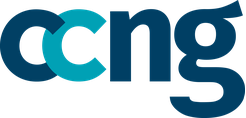Many companies are currently reevaluating their culture, recruiting practices, and employee engagement strategies to increase employee retention. Leadership plays a big part in this. Even as companies are looking at engagement software, AI, process reengineering, and hybrid schedules, there is an additional area where companies can gain traction that can have an immediate impact on employee attraction and retention.
We all know three things to be true about leadership: First, every leader, at any level, has a different frame of reference, skill set, education, expertise, experience, and level of passion. Second, people naturally gravitate toward what they enjoy doing and what they are passionate about. Third, where there is passion, there is a drive for excellence. The right leaders in the right place and in the right organizational structure can affect engagement, productivity, retention, results, and labor dollars spent, which all affect the bottom line.
As Denis Diderot, the French philosopher, said, “Only passions, great passions, can elevate the soul to do great things.” So what if leadership could design an organizational structure to be dynamic instead of static? What if the organizational structure could support a leader’s passion and skill set? What if a company’s organizational structure could support where a leader currently is and yet challenge them to grow? Wouldn’t that influence how they lead their teams? Wouldn’t that leader have a positive impact on employee satisfaction? And doesn’t employee satisfaction drive productivity, employee retention and better results?
Why are companies so stuck on maintaining the same organizational structure? Is it because that’s the way it’s always been? Most leaders understand and agree that we are currently in an ever-changing business climate, the likes of which we have never seen before. But are leaders trying to have a one-size-fits-all organizational structure? Does that structure support their goals? Are they trying to put a square peg in a round hole? Who’s determining a new best practice? And lastly, could the new best practice be a dynamic organizational structure?
In the current quest for attracting new frontline workers, engaging them, and trying to retain them, could a way be found to achieve more with less or by capitalizing on the current types of leaders you currently have with a dynamic organizational structure? Could creative organizational structures be a way to create new and dynamic management-to-employee ratios in a way that helps drive employers’ career development, employee satisfaction, and retention? If we could do that, would that drive more efficiencies and better results?
Here are a few ideas that can challenge leaders when thinking about restructuring their organizations, playing to their current leaders’ strengths, and capitalizing on the passions that are already present within their leaders—especially their frontline leaders.
1. MATCH YOUR LEADERS WITH WHAT THEY DO BEST.
Are they great with people? Can they motivate and inspire workers to be the best they can be and to perform well? If so, why are we weighing them down with reporting, pivot tables, and Excel formulas? If you have a manager that doesn’t naturally love to interact with people and would rather recreate reports in Excel and color code everything, why are you expecting them to inspire and motivate people?
2. CAN BETTER PEOPLE LEADERS HANDLE MORE PEOPLE ON THEIR TEAMS? CAN THESE SPECIAL LEADERS HANDLE MORE PEOPLE WITH DIFFERENT FUNCTIONS?
Try changing the manager-to-employee/worker ratios. By giving them different responsibilities with more people and/or more functions, organizations are helping these leaders get ready for the next level.
Why do we suddenly promote a new first-level leader to manage 15 to 20 people? If we have leaders that are more advanced and we’ve given them more people and/or different types of people and functions to manage, that can give us the opportunity to start off a new first-level leader or middle manager with fewer people to manage. For example, if a more advanced leader that is getting ready to be promoted to the next level could manage, let’s say, 30 people, why not start off new managers with 10 people and keep adding to their team as their skill set grows? In the end, your labor dollars will be the same, and you will be meeting each leader at a level that they can handle yet still challenges them.
3. CHANGE THE SIZE OF YOUR TEAMS BY UTILIZING MULTIPLE MANAGERS.
If a leader is good at coaching, let them do the coaching piece of leadership on their team. If a leader gravitates toward spreadsheets and data, let them analyze each team member’s performance and team activities for their team. Perhaps the leader that is doing the analysis might be able to handle more teams. This is also a good way for these combo team leaders to help mentor and coach their counterparts. This is a great method to get them each ready for the next level in their development. Perhaps one leader wants to lead the coaching for the organization while the other one wants to eventually be a business analyst. This type of creative organizational structure also gives the people on the team different types of leaders to get help from, which makes it a great learning environment.
4. CENTRALIZE SOME OF THE LEADERSHIP DUTIES SO LEADERS CAN CONCENTRATE ON WORKING WITH THEIR TEAMS.
Duties like taking attendance and answering questions about hours worked, requested days off, working an additional shift or an extra hour for the day, and payroll are some of the specific things that take a lot of time for managers and bog them down with additional paperwork.
Other duties that can be centralized are audits of the LMS requirements. Even though these types of technologies have a reminder system, all leaders know that making sure the self-guided trainings are completed on time takes time out of a leader’s day, especially when employees and workers work different shifts, work part time, or have to leave early for their shift. All this tracking down takes time for the leader and takes them away from their major duty, which is to coach. Leaders also spend time trying to get front-line team members to training classes on time. This can be a big sucker of time, whether leaders are in a brick-and-mortar or a work-at-home environment, where front-line workers can get lost in the virtual hallways.
5. CAPITALIZE ON SPECIFIC SKILLS THAT WORK WELL WITH DIFFERENT TYPES OF LEADERS.
Some leaders are great at working with new front-line employees and workers to get them up to speed faster. Usually these types of leaders are the more “cuddling” and patient kind of individuals. It comes to them naturally. Some leaders do well at mentoring people to move up the ladder, and others are more technical and can assist those new frontline workers that might be slower to adapt to new technology. Depending on the skill sets and professional maturity levels of your leaders, you can increase or decrease the manager-to-employee/worker ratios and still stay within your labor budget.
Organizations can utilize current payroll dollars by being creative with which duties each manager does, which duties are centralized, and different team sizes. Being creative can move your organization forward. This also offers frontline employees and workers the opportunity to be exposed to different types of leaders and helps train frontline leaders and future middle managers for the next level in their careers.
Having creative and dynamic organizational structures will help boost employee satisfaction and enjoyment of their jobs, as well as build leadership development programs that are not cookie cutter and are specifically designed for your company. This will help increase satisfaction and retention while at the same time decreasing absenteeism. This will also help build operational efficiencies within your organization that can drive more productivity and impact the bottom line.
So if someone likes that crispy part of the cookie and someone else likes the soft center, doesn’t it make sense to give each person the part they want and enjoy? Wouldn’t organizations be playing to people’s strengths while at the same time getting them ready for the next career step? When leaders are passionate and feel good about what they do, it affects how they lead and how enthusiastic they are, and that can build confidence in frontline employees and workers. In turn, more people will be happier at work, show up to work, and perform better. When this happens, customer service scores increase. The company can get rave reviews and attract more customers. This is when there is a chain reaction of success throughout the organization.
Companies that rethink their organizational structures can help drive employee satisfaction, career development, and retention. In this new and ever-changing business climate, this can help move a company forward in a new and different way that will impact customer satisfaction, revenue, and profits.
Vicki Brackett is a long time CCNG member / advocate, recognized as a subject-matter expert on virtual/work-at-home environments and leadership development. Vicki has written for and been interviewed by Forbes, Fast Company, Fortune Magazine, CFO Magazine, CEOWorld, HR News, Training Magazine, and a host of other publications, news outlets and podcasts on creative work-at-home and employee engagement strategies.



